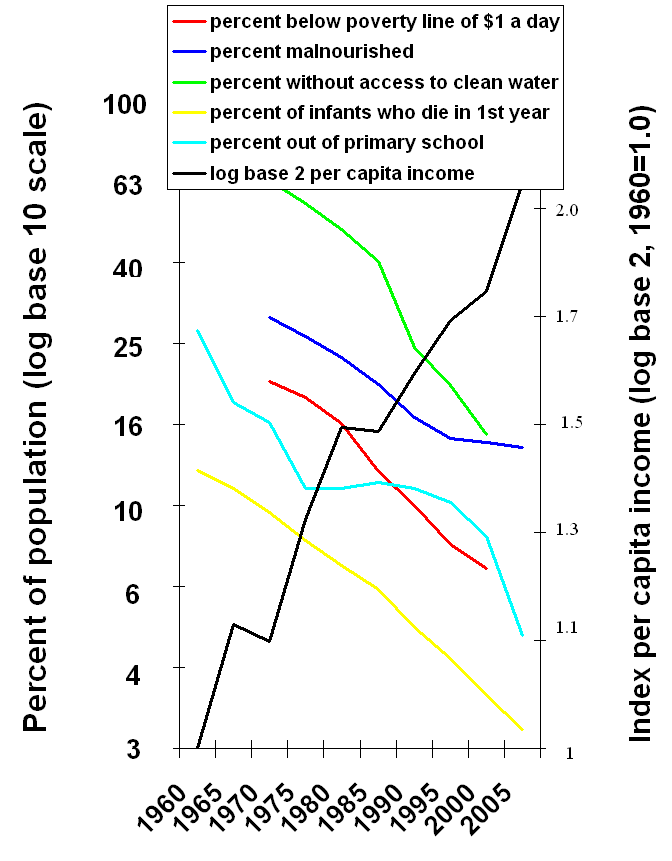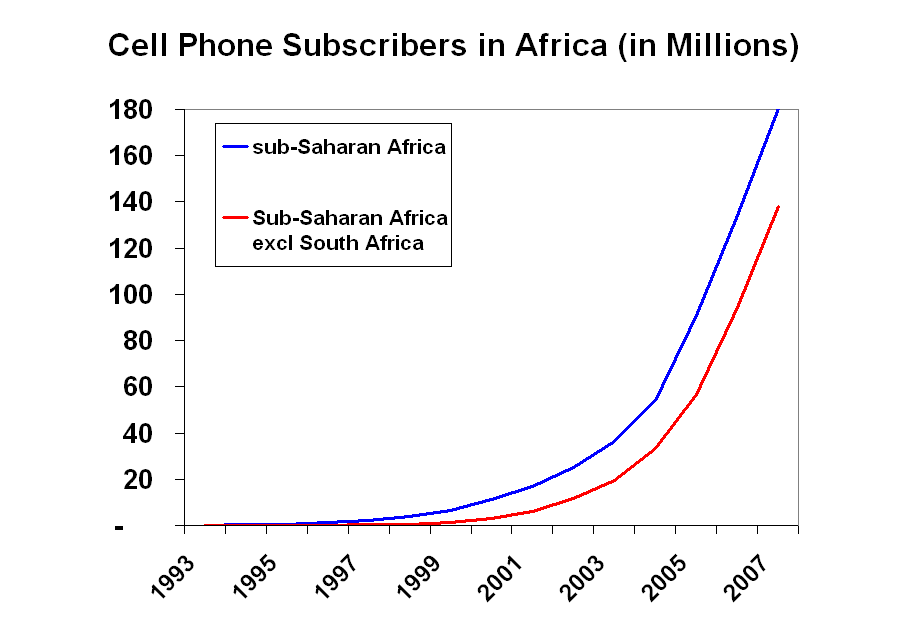Five simple principles for scaling up in aid
There is a lot of discussion in aid on scaling up small-scale successes in aid to reach many more potential beneficiaries. But what things can be scaled up? Here are some principles so simple that they would be embarrassing except that they are routinely violated in aid. (1) Scale up success not failure
The only reason for mentioning this is that the aid business has a strange habit of trying to scale up again things that have already failed. PROGRESA is the great success story of scaling up something after you had determined it was successful.
(2) Don’t scale up what you think is most important, scale up what you do best
There are lots of important issues, so why not choose the one that you do best? And let the people who are good at the other issues work on the other issues? Yet both official agencies and NGOs are often pulled away from what they do best by well-meaning politicians and funders who are focused only on final goals.
(3) You can scale up only what requires cheap, abundant inputs; you cannot scale up something that depends on expensive, scarce inputs
This is one of my problems with the Millennium Villages – they at least partly depend on world-class experts flying in to solve idiosyncratic problems of each village. World-class experts are a scarce resource that you can’t scale up.
(4) Things that you make routine are among the easiest to scale up
It worked for Henry Ford, McDonald’s, and WalMart, why not in aid? One of the secrets to success of the large vaccination campaigns that reduced child mortality was that relatively unskilled medical workers (in abundant supply) could give vaccinations as a routine activity. Of course, not everything can be made routine. For a more complex discussion about social service delivery in general, see the great paper by Lant Pritchett and Michael Woolcock.
(5) Evaluate whether you are still successful after scaling up
Scaling up often changes the nature of what you are doing, so evaluate whether the scaled-up version works as well as the original version.
I'm sure readers have other principles to suggest -- please do so!
 From Aid to Equality
From Aid to Equality


 Last season, when the British soccer team Liverpool FC played Real Madrid, the number of Spanish players in Liverpool’s team outnumbered those playing for Madrid. This is one illustration of an emerging trend: while soccer is already the most globalized of sports, it is also fast becoming one of the most globalized professions.
Last season, when the British soccer team Liverpool FC played Real Madrid, the number of Spanish players in Liverpool’s team outnumbered those playing for Madrid. This is one illustration of an emerging trend: while soccer is already the most globalized of sports, it is also fast becoming one of the most globalized professions. During the G8 meetings, Pope Benedict released a
During the G8 meetings, Pope Benedict released a 

 “Whenever any form of government becomes destructive to [the pursuit of liberty], it is the right of the people to alter or to abolish it.”
“Whenever any form of government becomes destructive to [the pursuit of liberty], it is the right of the people to alter or to abolish it.” Welcome to the Great NYU Play-In Revolution that occurred at 5pm on Sunday, June 7, 2009. A community living in a high-rise NYU housing complex rose up in revolt after the Rulers tried to crack down on such criminal behavior as kids playing with balls and skateboards in the plaza around the high-rises.
Welcome to the Great NYU Play-In Revolution that occurred at 5pm on Sunday, June 7, 2009. A community living in a high-rise NYU housing complex rose up in revolt after the Rulers tried to crack down on such criminal behavior as kids playing with balls and skateboards in the plaza around the high-rises.
 As the crowd gathered, the Rulers responded with a show of force, but ultimately backed down before the impressive show of people power.
As the crowd gathered, the Rulers responded with a show of force, but ultimately backed down before the impressive show of people power. I was startled during a meal at a non-luxury restaurant out in the boondocks in Ghana when my Ghanaian hostess suggested I check out the bathrooms. Lo and behold, they were indeed incredibly clean and hygienic. The reason seemed to be given by the following sign outside the lavatory.
Apparently this private firm had won a lot of bathroom-cleaning contracts as a way to promote its own cleaning products for the homes of the Ghanaian middle class (I wish some entrepreneur in the US would think of this for our disgusting gas station bathrooms).
I was startled during a meal at a non-luxury restaurant out in the boondocks in Ghana when my Ghanaian hostess suggested I check out the bathrooms. Lo and behold, they were indeed incredibly clean and hygienic. The reason seemed to be given by the following sign outside the lavatory.
Apparently this private firm had won a lot of bathroom-cleaning contracts as a way to promote its own cleaning products for the homes of the Ghanaian middle class (I wish some entrepreneur in the US would think of this for our disgusting gas station bathrooms). Individual liberty is a precise concept and a powerful ideal. It has an enormous moral appeal – “all men are created equal, and are endowed by their creator with certain inalienable rights, that among these are life, liberty, and the pursuit of happiness.” Jefferson wrote these words even though there was only liberty for propertied white males at the time in the US, but these words would serve as a beacon through American history, which Lincoln would invoke to motivate the Emancipation Proclamation, and which Martin Luther King would invoke to end Jim Crow and get de-facto voting rights for blacks.
Individual liberty is a precise concept and a powerful ideal. It has an enormous moral appeal – “all men are created equal, and are endowed by their creator with certain inalienable rights, that among these are life, liberty, and the pursuit of happiness.” Jefferson wrote these words even though there was only liberty for propertied white males at the time in the US, but these words would serve as a beacon through American history, which Lincoln would invoke to motivate the Emancipation Proclamation, and which Martin Luther King would invoke to end Jim Crow and get de-facto voting rights for blacks.


